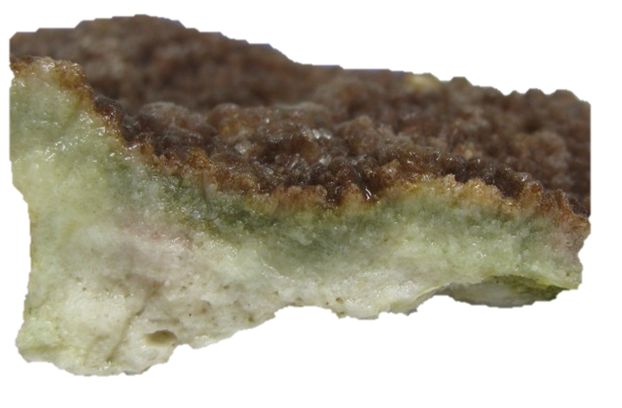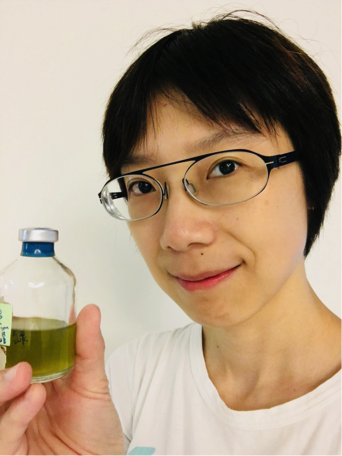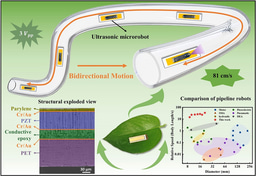
In marine environments, including coral reef ecosystems, all biomes are fundamentally dependent on their microbial constituents (Azam and Worden 2004). About 98% of reef-building corals contain endolithic microbes (Le Campion-Alsumard et al. 1995), and those endoliths contribute to the high biomass of corals (Odum and Odum 1955, Rosenberg et al. 2007, Schönberg and Wisshak 2012).
Among the endoliths in coral skeleton, aerobic microbes and green algae Ostreobium has been found in diverse live corals and is considered a coral symbiont because of its role of both microborer and primary producer (Schlichter et al. 1995, Del Campo et al. 2017). Besides, the endolithic microbes are related to new nitrogen input and process nutrient regeneration in coral reefs (Shashar et al. 1994, O’Neil and Capone 2008, Cardini et al. 2014).
In addition to aerobic endolithic microorganisms, anaerobic photoautotrophic green sulfur bacteria (GSB) Prosthecochloris has been constantly found in the skeleton of coral Isopora palifera with a relative high abundance (Yang et al. 2016). Recently, anaerobic microbes are considered as one of the major contributors to the high diversity characteristics of the coral holobiont. However, due to technical challenges, their distribution, as well as their functions, remains poorly characterized despite considerable belief on the critical role they may play in the coral physiology and response to environmental stressors.
Why can GSB prevail in the skeleton of Isopora palifera? What are their functions? These are core questions of this study. Hence, we conducted multi-level approaches—including metagenomic, anaerobic cultivation, pigment analysis, ultrathin-section transmission electron microscopy, fluorescence in situ hybridization, nanoscale secondary ion mass spectrometry (FISH-NanoSIMS) and acetylene reduction assay (ARA)—to understand and clarify the role of the endolithic GSB in the nutrient cycle.

(Green Iayer in the coral, Isopora palifera)
With culture-independent and culture-dependent methods, we discovered putative functions of nitrogen, sulfur and carbon metabolisms of GSB and other endolithic microbes in the coral skeleton. In addition, the results from FISH-NanoSIMS and ARA also demonstrated the ability of nitrogen uptake by endolithic GSB in the coral skeleton, indicating the dominant GSB in coral skeletons has important role in fixing nitrogen. Furthermore, we found that the dominant endolithic GSB in the green layer are new species of marine GSB Prosthecochloris. Interestingly, the new strains of Prosthecochloris from coral skeletons showed phylogenetic distance from other free-living marine Prosthecochloris isolates. Therefore, we propose a group of coral-associated Prosthecochloris (CAP).
We suggest that the composition of endolithic microbes is more likely to be diverse and dynamic than previous understanding, and special micro-environmental factors in the skeleton should be paid more attention. Besides, the growth conditions and physiological, cellular and genomic features of the GSB are strongly linked with specific environmental factors: that is, light and oxygen although there can be other environmental factors as well. We believe that this study pointed out the value of anaerobic metabolisms when studying coral holobionts and the evolution of CAP and their coral hosts. The further information can be found in our paper (Yang et al., 2019, Microbiome 7:3)

(Dr. Shan-Hua Yang, the first author, and the culture of endolithic GSB)
Follow the Topic
-
Microbiome

This journal hopes to integrate researchers with common scientific objectives across a broad cross-section of sub-disciplines within microbial ecology. It covers studies of microbiomes colonizing humans, animals, plants or the environment, both built and natural or manipulated, as in agriculture.
Related Collections
With Collections, you can get published faster and increase your visibility.
Harnessing plant microbiomes to improve performance and mechanistic understanding
This is a Cross-Journal Collection with Microbiome, Environmental Microbiome, npj Science of Plants, and npj Biofilms and Microbiomes. Please click here to see the collection page for npj Science of Plants and npj Biofilms and Microbiomes.
Modern agriculture needs to sustainably increase crop productivity while preserving ecosystem health. As soil degradation, climate variability, and diminishing input efficiency continue to threaten agricultural outputs, there is a pressing need to enhance plant performance through ecologically-sound strategies. In this context, plant-associated microbiomes represent a powerful, yet underexploited, resource to improve plant vigor, nutrient acquisition, stress resilience, and overall productivity.
The plant microbiome—comprising bacteria, fungi, and other microorganisms inhabiting the rhizosphere, endosphere, and phyllosphere—plays a fundamental role in shaping plant physiology and development. Increasing evidence demonstrates that beneficial microbes mediate key processes such as nutrient solubilization and uptake, hormonal regulation, photosynthetic efficiency, and systemic resistance to (a)biotic stresses. However, to fully harness these capabilities, a mechanistic understanding of the molecular dialogues and functional traits underpinning plant-microbe interactions is essential.
Recent advances in multi-omics technologies, synthetic biology, and high-throughput functional screening have accelerated our ability to dissect these interactions at molecular, cellular, and system levels. Yet, significant challenges remain in translating these mechanistic insights into robust microbiome-based applications for agriculture. Core knowledge gaps include identifying microbial functions that are conserved across environments and hosts, understanding the signaling networks and metabolic exchanges between partners, and predicting microbiome assembly and stability under field conditions.
This Research Topic welcomes Original Research, Reviews, Perspectives, and Meta-analyses that delve into the functional and mechanistic basis of plant-microbiome interactions. We are particularly interested in contributions that integrate molecular microbiology, systems biology, plant physiology, and computational modeling to unravel the mechanisms by which microbial communities enhance plant performance and/or mechanisms employed by plant hosts to assemble beneficial microbiomes. Studies ranging from controlled experimental systems to applied field trials are encouraged, especially those aiming to bridge the gap between fundamental understanding and translational outcomes such as microbial consortia, engineered strains, or microbiome-informed management practices.
Ultimately, this collection aims to advance our ability to rationally design and apply microbiome-based strategies by deepening our mechanistic insight into how plants select beneficial microbiomes and in turn how microbes shape plant health and productivity.
This collection is open for submissions from all authors on the condition that the manuscript falls within both the scope of the collection and the journal it is submitted to.
All submissions in this collection undergo the relevant journal’s standard peer review process. Similarly, all manuscripts authored by a Guest Editor(s) will be handled by the Editor-in-Chief of the relevant journal. As an open access publication, participating journals levy an article processing fee (Microbiome, Environmental Microbiome). We recognize that many key stakeholders may not have access to such resources and are committed to supporting participation in this issue wherever resources are a barrier. For more information about what support may be available, please visit OA funding and support, or email OAfundingpolicy@springernature.com or the Editor-in-Chief of the journal where the article is being submitted.
Collection policies for Microbiome and Environmental Microbiome:
Please refer to this page. Please only submit to one journal, but note authors have the option to transfer to another participating journal following the editors’ recommendation.
Collection policies for npj Science of Plants and npj Biofilms and Microbiomes:
Please refer to npj's Collection policies page for full details.
Publishing Model: Open Access
Deadline: Jun 01, 2026
Microbiome and Reproductive Health
Microbiome is calling for submissions to our Collection on Microbiome and Reproductive Health.
Our understanding of the intricate relationship between the microbiome and reproductive health holds profound translational implications for fertility, pregnancy, and reproductive disorders. To truly advance this field, it is essential to move beyond descriptive and associative studies and focus on mechanistic research that uncovers the functional underpinnings of the host–microbiome interface. Such studies can reveal how microbial communities influence reproductive physiology, including hormonal regulation, immune responses, and overall reproductive health.
Recent advances have highlighted the role of specific bacterial populations in both male and female fertility, as well as their impact on pregnancy outcomes. For example, the vaginal microbiome has been linked to preterm birth, while emerging evidence suggests that gut microbiota may modulate reproductive hormone levels. These insights underscore the need for research that explores how and why these microbial influences occur.
Looking ahead, the potential for breakthroughs is immense. Mechanistic studies have the power to drive the development of microbiome-based therapies that address infertility, improve pregnancy outcomes, and reduce the risk of reproductive diseases. Incorporating microbiome analysis into reproductive health assessments could transform clinical practice and, by deepening our understanding of host–microbiome mechanisms, lay the groundwork for personalized medicine in gynecology and obstetrics.
We invite researchers to contribute to this Special Collection on Microbiome and Reproductive Health. Submissions should emphasize functional and mechanistic insights into the host–microbiome relationship. Topics of interest include, but are not limited to:
- Microbiome and infertility
- Vaginal microbiome and pregnancy outcomes
- Gut microbiota and reproductive hormones
- Microbial influences on menstrual health
- Live biotherapeutics and reproductive health interventions
- Microbiome alterations as drivers of reproductive disorders
- Environmental factors shaping the microbiome
- Intergenerational microbiome transmission
This Collection supports and amplifies research related to SDG 3, Good Health and Well-Being.
All submissions in this collection undergo the journal’s standard peer review process. As an open access publication, this journal levies an article processing fee (details here). We recognize that many key stakeholders may not have access to such resources and are committed to supporting participation in this issue wherever resources are a barrier. For more information about what support may be available, please visit OA funding and support, or email OAfundingpolicy@springernature.com or the Editor-in-Chief.
Publishing Model: Open Access
Deadline: Jun 16, 2026





Please sign in or register for FREE
If you are a registered user on Research Communities by Springer Nature, please sign in